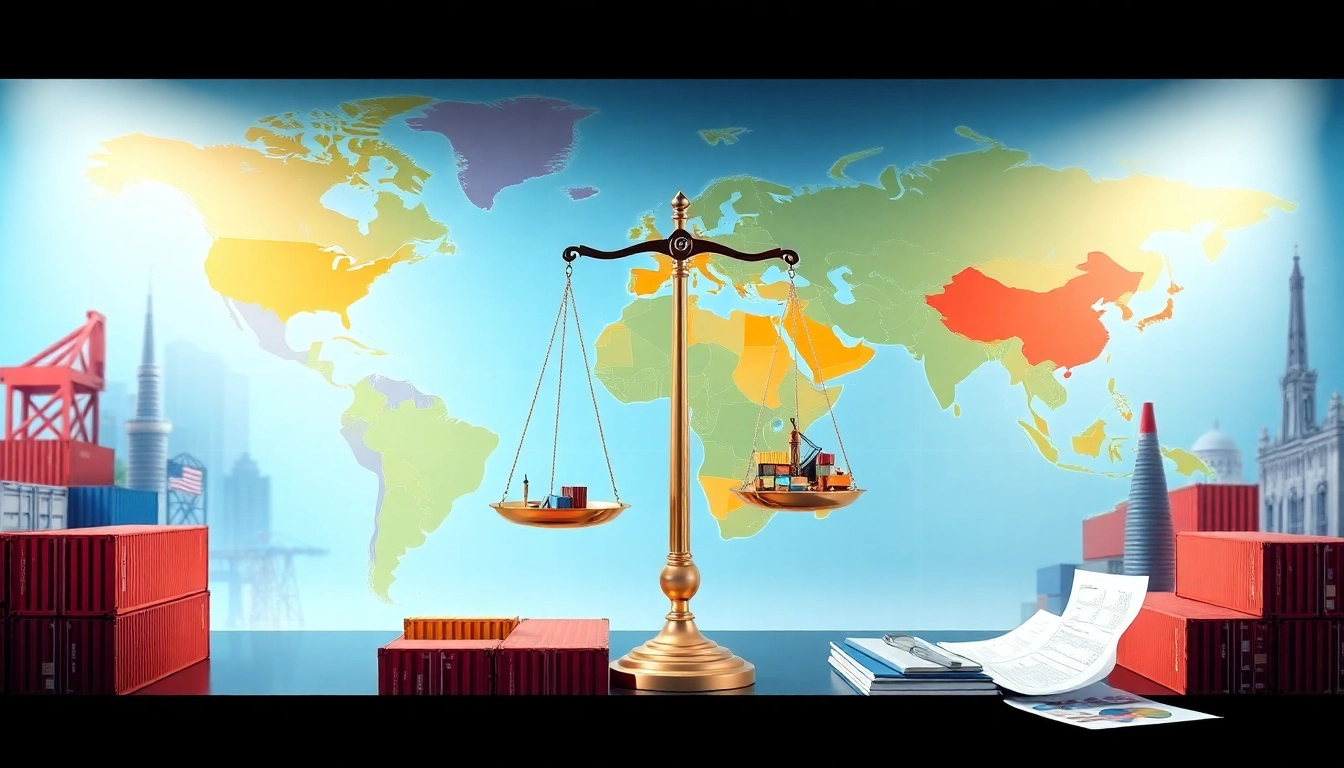Understanding Export Tariffs: An Overview
Export tariffs represent an essential facet of international trade, influencing the flow of goods across borders and shaping global economic relations. These tariffs, imposed by governments on exported goods, can serve various purposes, including generating revenue, protecting domestic industries, and navigating trade imbalances. Understanding export tariffs and their implications is crucial for businesses involved in international trade, policymakers, and economists alike.
Definition and Purpose of Export Tariffs
Export tariffs are taxes levied on goods that are sent out of a country. Their primary objectives include:
- Revenue Generation: Governments often rely on tariffs as a source of revenue, particularly in developing nations where alternative sources of income may be limited.
- Protection of Domestic Industries: By imposing tariffs on exported goods, governments can protect local producers by making it more costly for foreign competitors to enter the domestic market.
- Regulating Supply and Demand: Export tariffs can help governments control the quantity of goods that leave the country, addressing issues related to shortages of essential products.
- Trade Balance Management: Tariffs can also act as a tool for correcting trade imbalances by influencing price levels and demand for goods.
The History of Export Tariffs in International Trade
The practice of imposing export tariffs has been a part of trade for centuries. Historically, nations used these tariffs as a means of economic warfare, attempting to gain advantage over competitors by hindering exports of critical goods. For instance, during the mercantilism era of the 16th to 18th centuries, many countries employed export tariffs on raw materials to benefit their burgeoning industries.
In modern contexts, global trade agreements and organizations like the World Trade Organization (WTO) have aimed to limit the application of export tariffs to foster freer trade. However, nations still occasionally resort to export tariffs for strategic reasons, such as ensuring domestic supply or retaliating against perceived unfair trade practices.
Economic Impacts of Export Tariffs
Export tariffs can have both positive and negative economic implications:
- Positive Impacts: They can protect emerging industries, create job opportunities, and provide revenue for government initiatives.
- Negative Impacts: They may lead to higher prices for consumers, reduced competitiveness for exporters, and strained relations with trading partners, which can culminate in trade wars.
Over time, sustained export tariffs can distort market dynamics, leading to inefficiencies in resource allocation. Businesses must navigate these complexities and prepare for possible fluctuations in their operating environment.
Types of Export Tariffs and Their Functions
Various tariff structures exist, each serving different functions and implications for trade. Understanding these types can aid businesses in developing strategic plans.
Ad Valorem Tariffs: Definition and Examples
Ad valorem tariffs are based on the value of the goods exported. Typically expressed as a percentage of the total value, these tariffs are designed to keep pace with inflation and changes in market prices. For example, a 10% ad valorem tariff on a $1000 product translates to a $100 tariff.
Countries may apply ad valorem tariffs across many goods, especially luxury items, to generate significant revenue while discouraging non-essential exports. This type of tariff can also be seen in environmental regulations, where producers of goods with larger carbon footprints might face steeper tariffs due to their perceived negative impact.
Specific Tariffs: Key Characteristics
Specific tariffs are fixed amounts charged per unit of product, irrespective of its value. For instance, a country might impose a specific tariff of $50 on each ton of steel exported. This approach provides predictability and is often easier to manage in terms of forecasting tax revenue.
Specific tariffs can be particularly beneficial in stabilizing revenue for the government, especially if market prices experience volatility. However, these tariffs can also encourage overproduction at certain thresholds, leading to potential excess supply in the market.
Compound Tariffs: When and Why They Are Used
Compound tariffs blend both ad valorem and specific tariffs, establishing a dual structure where a fixed fee is charged alongside a percentage of the product’s value. This dual approach allows for greater flexibility and can help governments address price fluctuations more effectively.
This type of tariff is advantageous in circumstances where both the quantity and value of traded goods vary significantly. It provides a balanced method for revenue collection while also protecting domestic industries against price drops in foreign competitors.
How Export Tariffs Affect Global Trade
The implications of export tariffs are extensive, influencing everything from business strategies to international relations.
The Role of Export Tariffs in Trade Agreements
Export tariffs find their place in trade agreements as negotiable elements that can be adjusted to foster better relationships between countries. Many agreements aim to reduce or eliminate tariffs altogether, promoting freer trade.
However, exporter countries may still impose tariffs on specific goods as strategic bargaining chips during negotiations, creating complex situations that require diplomacy and thoughtful policymaking.
Case Studies: Countries and Their Export Tariff Policies
Different countries have adopted diverse approaches to export tariffs based on their economic strategies:
- China: To manage its vast production capabilities, China employs various export tariffs, particularly on raw materials. For example, it has imposed tariffs on rare earth minerals to preserve domestic supply and support local industries.
- India: India has historically utilized export tariffs to protect its agricultural sector. By imposing tariffs on certain crops, the government aims to secure affordable prices for domestic consumers while stimulating local production.
- Brazil: Brazil’s export tariffs are primarily applied to commodities like soybeans and iron ore. The government reserves the right to modify these tariffs to ensure compliance with international agreements while fostering local industry growth.
Strategies for Businesses to Adapt to Export Tariffs
Businesses must proactively address the challenges and opportunities presented by export tariffs. This can involve:
- Cost Management: Companies should assess their costing structures and explore ways to optimize operations to absorb or offset tariff impacts.
- Diversification of Markets: Reducing reliance on specific markets can minimize risks associated with potential tariff hikes. Companies can look into different regions with favorable trade treaties.
- Engaging in Advocacy: Firms affected by significant tariff burdens should consider advocating for fair trade policies and engaging with lawmakers to represent their interests effectively.
Best Practices for Navigating Export Tariffs
The following best practices can assist companies in navigating export tariffs effectively:
Conducting Market Research on Tariff Changes
Regularly monitoring tariff-related news and understanding new trade policies is essential. Businesses should invest resources in market research to assess how tariff changes may impact their operations and financial health.
Understanding global supply chains and potential shifts can provide valuable insights into alternative sourcing strategies and new markets to explore, ensuring continuity and growth in a dynamic global trade landscape.
Leveraging Technology in Export Tariff Compliance
Modern businesses can utilize technology solutions for effective tariff compliance. Software tools that automate classification and reporting can reduce time spent managing tariffs and enhance accuracy. Additionally, blockchain technology can improve transparency and streamline logistics, creating a more resilient export strategy.
Building Relationships with Customs Authorities
Establishing strong relationships with customs authorities can facilitate smoother operations. Companies should engage regularly with customs officials, understanding regulatory frameworks, compliance requirements, and any upcoming changes that may affect trade. Consistent communication can help resolve issues proactively, minimizing disruptions.
Future Trends in Export Tariffs
Looking ahead, various factors will shape the landscape of export tariffs and their global implications.
Impact of Political Climate on Export Tariffs
The political climate in key regions significantly influences export tariffs. Changes in leadership, shifts in policy priorities, or evolving trade alliances can lead to unpredictable tariff adjustments. International relations often dictate how tariffs are used, with political tensions resulting in unexpected trade barriers.
For instance, recent geopolitical tensions have led countries to reassess their tariffs as measures of economic leverage. Businesses must remain agile, closely acutely aware of political developments that could impact trade dynamics and tariffs.
Emerging Economies and Export Tariff Shifts
Emerging economies are redefining the landscape of global trade and export tariffs. As nations like Vietnam and Bangladesh rise as manufacturing hubs, established players may face increased competition and adapt their tariff strategies accordingly.
Countries may look to incentivize exports through lower tariffs or relaxed restrictions, fostering a competitive environment. Those businesses that effectively navigate these changes stand to grow their market presence significantly.
Anticipating Changes: Adapting to Global Trade Dynamics
In a rapidly changing global trade environment, businesses must prioritize adaptability. Constant evaluation of tariff impacts on supply chains and cost structures will enable organizations to pivot strategies effectively. Developing contingency plans for various scenarios, such as sudden tariff increases or trade disputes, can be crucial for long-term success.
Furthermore, fostering an organizational culture that prioritizes flexibility and innovation can empower businesses to respond proactively to emerging trade challenges and capitalize on new opportunities in global markets.



